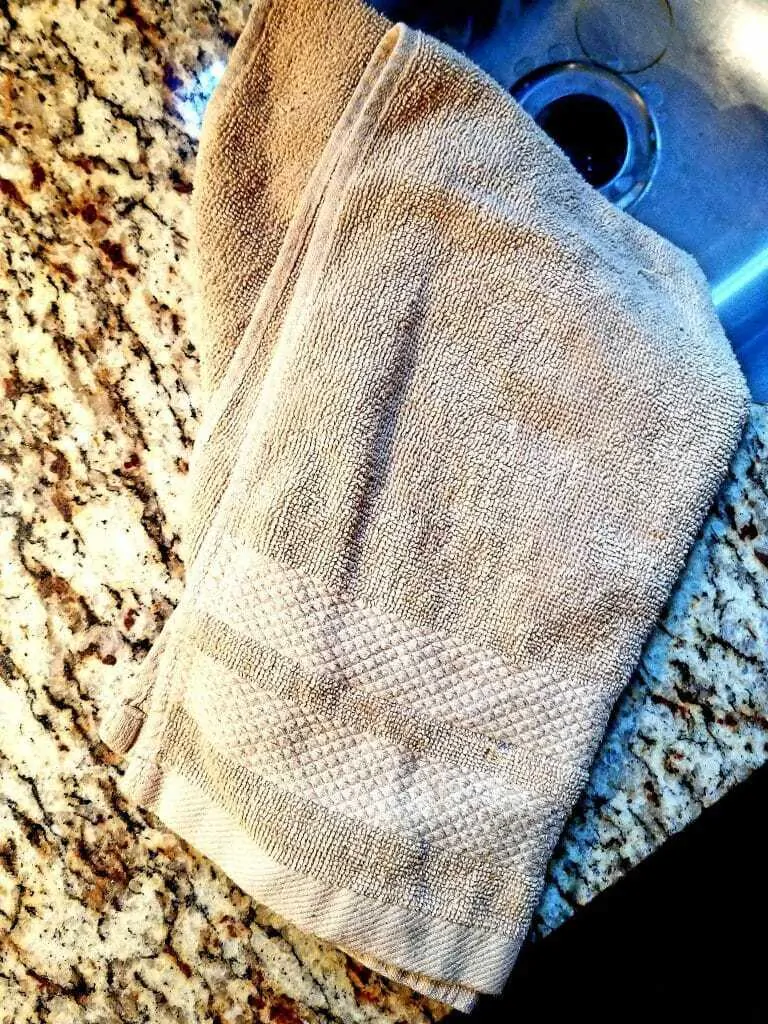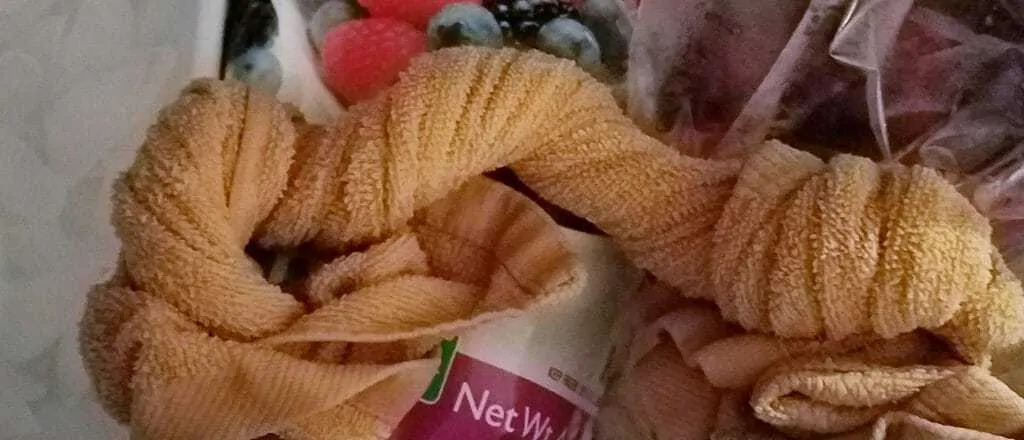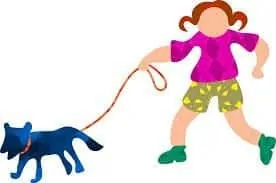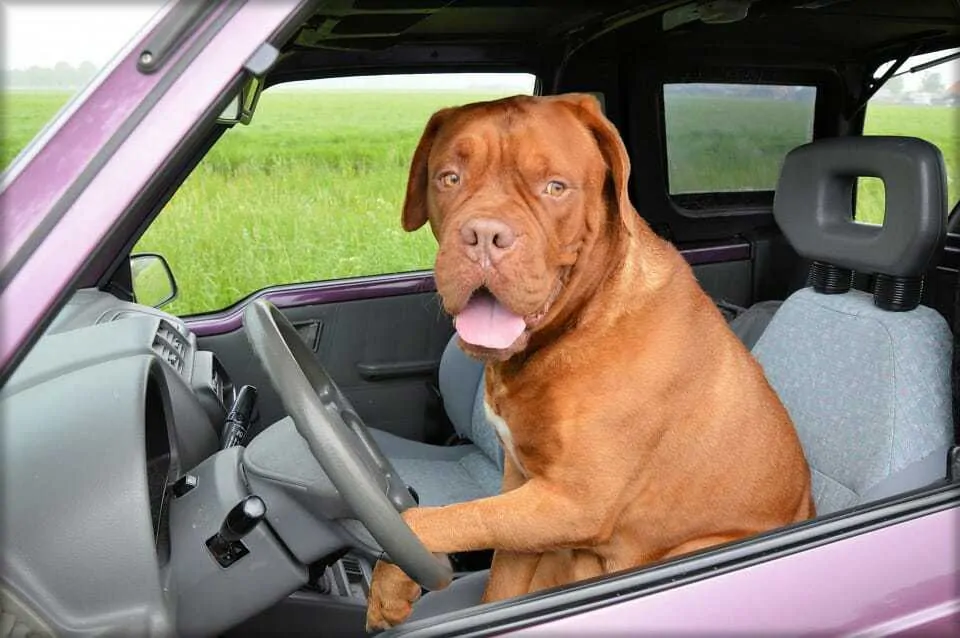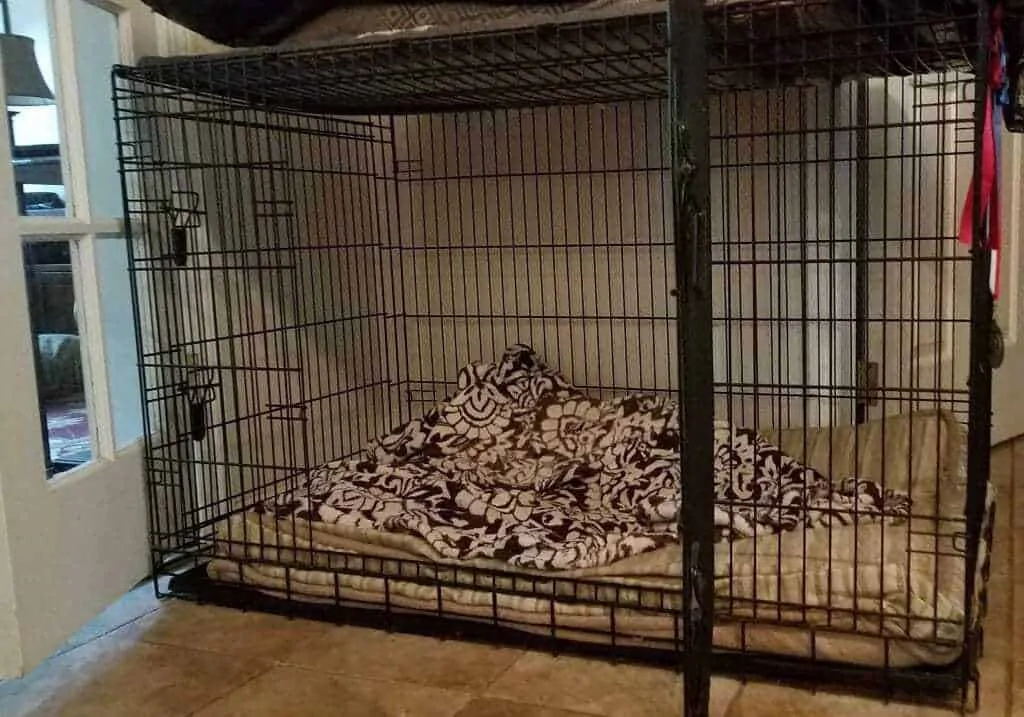Behavior problems are a common reason owners give for surrendering pets to shelters or rescue organizations. Approximately 3.3 million dogs are surrendered to animal shelters each year. One in five of these dogs will be euthanized. Correcting behaviors and keeping dogs in loving homes is not only easier on dog owners, but literally saves lives.
Research also shows pet ownership has proven health benefits to humans. So, keeping dogs in loving homes may not just save dogs’ lives. Dog owners are more likely to survive heart attacks, according to research. Dog owners with diabetes are more likely to manage their blood sugar, and people who have pets have been shown to have lower blood pressure.
Most dog behavior problems can be corrected if owners are armed with some tools to tackle the behaviors. This article will cover the following 10 common dog behavior problems and how to stop them:
Contents
1. Chewing
Chewing serves a purpose. It helps dogs maintain strong jaws. It is also important to the maintenance of healthy teeth and gums in dogs.
There are a number of reasons Fido could be chewing your favorite items, so it is important to determine the cause of his chewing in order to effectively treat it.
If you have come home to find your favorite, rubber-soled slippers in tatters, your furry friend could be chewing for one of the following reasons:
Teething
If your dog is under two years-old, there is a good chance he is chewing because he is experiencing pain from teeth that are still growing in. The act of chewing helps to alleviate the pain and calm the pup.
You can help prevent chewing on inappropriate items by providing your dog with safe, chewable dog toys that are intended for teething. Not sure which toys to choose? Check out the best (and worst) toys for teething puppies.
Teething Remedy
A friend gave me this wonderful tip while I was home writing and my teething puppy was crying:
- Take a washcloth or dish towel you don’t mind giving up.
- Run it under cold tap water, twist it, and stick it in the freezer.
- Once it has frozen, give it to the puppy to chew on.
- Repeat with same and/or another washcloth.
It really helps to soothe the pup’s sore gums.
STEP ONE: Select a standard, clean dish towel you don’t mind giving up.
STEP TWO: Run dish towel under tap water until fully soaked.
STEP THREE: Twist dish towel after fully soaking it.
STEP FOUR: Place dish towel in freezer until frozen. Then give it to teething puppy. Make sure to supervise your puppy when he chews on this or anything else.
Boredom
If your dog continues destructive chewing into adulthood, it is possible he is not getting enough stimulation. Science has shown that pet owners reap numerous health benefits from their furry friends, but remember Fido depends on you for companionship and mental stimulation to keep him healthy and happy.
If your dog tends to chew on your favorite belongings even after a daily run, chances are he needs to exercise his brain. Dogs who need an outlet for their minds will display negative behaviors to get your attention.
Just like humans need to be challenged, dogs benefit from using their brains. Try taking your pup to different places. Play at a different park or switch up your walking routine to include new routes. Sometimes a change of scenery can make a world of difference.
Here is another way to challenge your dog; try some toys that require your dog to think in order to be rewarded. For example, certain toys require a dog to solve a simple puzzle in order to dispense treats.
This brain ball is designed to get your dog thinking. Stuff it with your dog’s favorite treats. The inside layers prevent the treats from falling out, making it harder than it looks for dogs to get the treats out.
Exploration
Much like toddlers, dogs explore their surroundings with their mouths. Unfortunately, some don’t stop at chewing, but go on to be full on eaters of the items they are chewing.
As an owner of a dog who falls into this category, I can tell you it can become expensive and very dangerous. Items that are not meant to be eaten can end up stuck in your dog’s digestive tract, causing a bowel blockage or worse.
Replace with appropriate chew toys
If you have a chewer, the best course of action is to set boundaries when it comes to chewing.
As soon as you catch your dog in the act of chewing something that is not acceptable (an item of yours, furniture, shoes), say “no,” and immediately replace the item with an acceptable chewing object. Repeat this practice as often and as early as possible.
Make sure you have plenty of safe, appropriate, chew toys around to give your dog. This will lower the chances of his sinking his teeth into your favorite items.
2. Begging
Dogs beg for the same reason we naturally head to the kitchen when we smell our favorite foods on the stove. Our pups are hoping for a taste of the goodies.
The best thing you can do is prevent begging from happening in the first place. If you never feed your dog from the table, he will not learn to beg while you are eating.
If you feed your dog from the table, he will learn to keep coming back for more.
Remember to enlist the entire household
This will only work as long as everyone is on board. So make sure the whole family knows that no one is to feed the dog from the table. This includes any visitors who eat at your home.
If he already knows that you can’t resist those puppy eyes, you are going to have to put in some extra effort to put an end to begging behavior. Try waiting until everyone has finished dinner before feeding Fido.
While you are eating, restrict his access to the dinner table. Remember, this is not a punishment. Your dog should be sent to a place (such as his crate or bed) where he feels safe and comfortable.
If you want to keep your pup nearby, but not too close to the table, try a freestanding pet gate. Many require little or no installation and can be set up anywhere.
Reward good behavior
If you have human leftovers that your dog likes (and your veterinarian has approved), reward your dog by placing some in his food dish once everyone else is done eating.
Remember, rewards should be given only if your pup was calm, quiet, and did not disturb you during your meal. You do not want to reward bad behavior such as crying while you are eating or lapping at your feet underneath the table in an effort to catch falling morsels.
3. Pulling on the Leash
We have all seen that person who ends up wrapped around a tree, along for the ride on the back end of a leash, behind an eager squirrel chaser. Perhaps you have been that person. I’ll admit, as many dogs as I’ve trained, I have still received the occasional, “Who’s taking who for a walk?” from a passerby.
Good leash walking manners need to be taught and reinforced. Not only does it make walking your canine companion easier and more enjoyable, but it also reduces the risk of dangerous situations.
First, make sure your dog is properly fitted with an appropriate collar and leash. For most dogs, a standard collar and a retractable dog leash is fine. However, for very small or very strong dogs, you may need a different type of collar.
If you allow your dog to pull, you run the risk of your dog accidentally breaking free, running off, becoming entangled with other dogs, or unintentionally pulling you down.
Who is taking who for a walk?
Teaching leash manners
Ideally, I recommend never letting your dog get ahead of you or pull on the leash. By letting him do this, you are teaching him this behavior is acceptable. Any behavior that comes with a payoff will be repeated. Use this key to your advantage.
In other words, reward your dog each time he completes a desired behavior.
Keep small, soft treats in a treat pouch that can easily attach to your belt or clothing. Since most dogs are motivated by food, they tend to stay in the area where they know the food is located. When your dog is walking beside you, reward him with a treat or two.
Using language is important too. So, make sure to praise him with a “good dog!” Do this each time he displays the behavior you are looking for.
Tips and tricks
If you are just starting out, keep the leash short and loose. A short leash allows your dog less opportunity to pull and wander. A loose leash also signals to the dog that you are calm. If you hold it tightly, you transfer your anxiety to your dog.
The loose leash also allows you to give a quick tug and a firm “no!” or “leave it” when you want your dog’s attention. If you always hold the leash tightly, giving a tug on it will have little effect.
If your dog pulls ahead of you, the leash will tighten. Simply stop and stand still. It won’t take your pup long to figure out you’ve stopped moving. Chances are he will turn around to see what happened.
He will likely come back to you, since he has already learned that you hold the treats, thus returning to you is a positive thing. As soon as he returns to your side, reward him with a treat and verbal praise.
Every time your dog is focused on you, paying attention to you, and walking beside you, reward him with both a treat and verbal praise, such as “good dog!” or “yes!” Remember to practice this daily during walks.
The more payoff your pooch gets from walking nicely on a leash with you, the more likely he is to want to continue that behavior.
4. Not Coming When Called
Teaching your dog to come when called, also referred to as the recall, will not only make taking your dog places infinitely easier, but it will give you peace of mind, and could end up saving your dog’s life.
The first step to the recall is the same as (mentioned above) that used in teaching leash walking; you want to establish that coming to you is always the best thing your dog can do. Do this by praising your dog every time he comes to you. Do this regardless of whether or not you called him.
Here are some basics to teaching your dog the recall:
- Remember that your pup won’t master the task in a day. Take it one step at a time.
- When you start out with the “come” command, start with short distances. You can increase the distance gradually as he succeeds at the task.
- If you begin teaching your dog to come to you in the kitchen, don’t expect that he will then answer to the same command in a crowded outdoor park. Once, he has mastered the task in the kitchen, try moving to a small fenced in yard.
- Once he has mastered the recall in the yard, continue practicing in that location.
- You want your dog to experience a feeling of success.
- Remember to give the treat immediately when your dog reaches you. This is so he associates the reward with the action and the command.
Play Games
As you reinforce “come,” make it fun for you and your dog.
- Play Hide-and-Seek: You can do this in the house or in a fenced yard. Call, “come!” or “come Snoopy!” as you are hiding behind a door in another room. As soon as he finds you, offer praise and a reward.
- Dogs also love chasing after their “people.” So, if you are having trouble keeping your pooch’s attention during training, try practicing the recall and running a short distance from the dog. He is likely to run to you. Once he is engaged, stop moving and allow him to reach you.
- Once your pooch reaches you, praise him with words and treats to show how great it is that he came to you.
Beverly Ulbrich, a California dog trainer and founder of The Pooch Coach, reminds dog owners:
“Offer praise as your dog is coming to you—don’t wait until he makes it all the way to your feet. By telling him he’s doing the right thing, he’ll be more encouraged to come all the way.”
5. Barking at the Door When People Arrive
If your dog is the type to get over-excited when someone comes to the door, there is a good chance he is fearful and/or feels the need to protect his home turf (and the people on it).
To make visitors’ arrival at your home a less stressful experience for everyone, it would be best to teach Fido a new skill set.
Pick a place that your pooch feels safe. It can be his house, bed or crate, but should be a place where he can comfortably lie down.
It is also helpful if he can see the entrance from this place since he is looking to see who is arriving.
Practice by telling your pup, “go to your place.” Reward and praise him generously when he does so.
Practice having him stay in his place for a few minutes at a time until you give him the command to move about. Continue practicing this at a time when you are not expecting visitors.
When visitors do come to the house, simply tell your furry friend to go to his place and point toward the spot you have practiced. Have him wait there while you greet people at the door.
6. Fear of Riding In The Car
If you are looking forward to taking your dog places only to find you have to physically drag him to the car, it can be very disappointing. However, some dogs do have a fear of riding in the car.
This can be caused by any number of things, including:
- Motion sickness – Like humans, dogs can get car sick. This is more common in younger dogs than it is in older dogs. If your pup has become sick in the car, this experience may have turned him off to car rides.
- Association with negative or fearful experience – It is possible that your dog’s only experience in the car consisted of traveling to the veterinarian’s office. If you rescued your dog, he may remember a car ride that ended in him being left at a shelter or rescue. Therefore, car rides may be associated with feelings of abandonment.
- Discomfort associated with unusual sensations – We are used to riding in cars, but think how strange it must feel to someone who is not. The engine makes noises. The blinkers make noise. The seats and floor vibrate. It’s tough to keep your balance when the car turns around a corner. All of these feelings can cause great discomfort to a dog, particularly one who has not spent much time in the car.
You can help your dog overcome fear of riding in the car. Be patient and take it one paw at a time.
Overcoming anxiety and hitting the road
If you suspect that motion sickness is the cause of your dog’s travel woes, talk to your veterinarian. There are medications he or she can recommend to ease the symptoms of motion sickness.
Your vet may also recommend that you limit your dog’s food intake for several hours before a car ride.
If your dog’s anxiety stems from more than a queasy stomach, overcoming it will require a bit more patience on your part. The key is using baby (puppy) steps:
- Start by encouraging him to come to the car on his own. Rather than pulling him by his leash, start enticing your dog to walk toward the parked car on his own. Praise him in an enthusiastic tone as he makes progress, offering treats along the way. Continue to practice this until your dog is comfortable walking to the car on his own.
- Walk up to the car with your dog, have him sit while you open the door. Then give him a reward and walk away.
- Encourage your dog to get inside. Once your dog is comfortable approaching and standing next to the parked car, open the car doors and have him sit by the car. Place a special treat inside the car. Allow him to sniff around the car and get in.
Sometimes this works better if you are in the car. You can lie down across the back seat (with the special treats, of course) and use a happy tone of voice to encourage your dog to come join you.
- Just be. Once you and your dog are in the car, just sit together. Praise him, pet him, and just enjoy one another. There is no need to go from puppy steps to 60 mph the first time Fido sits comfortably in the car.
- Start with short trips. Don’t make your dog’s first trip in the car a cross-country adventure. Keep it brief. Start out by backing out of the driveway and driving around the block. Maybe next time take a drive to the dog park.
Remember to make your dog’s first few rides fun. Hold off on the car rides to the veterinarian’s office if possible. You want to give your dog some positive experiences to associate with his car rides.
7. Jumping up
Does your dog jump up to greet you, wagging tail and all? Dogs are social creatures and jumping when you (or others) enter the home is usually your dog’s way of showing excitement.
I believe an excited dog is looking for attention from you. Therefore, any attention you pay to jumping behavior (even if it is corrective) is better than no attention at all.
The best way to stop your dog from jumping is not to give him attention until he has all four paws on the ground.
When he goes to jump up, simply turn your back to your dog and do not acknowledge him. Do not make eye contact and do not speak. The minute he has all four paws on the ground, greet him and show how happy you are to see him too.
Consistency is key. As soon as your dog realizes there is no payoff for jumping up, he will stop the behavior.
8. Aggression
Of all dog behavior problems, aggression is the one that can potentially be the most dangerous. It is also one of the top reasons people surrender dogs to shelters.
It is crucial that owners recognize signs of aggression and deal with aggressive tendencies early.
This dog is displaying a sign of aggressive behavior.
Aggression is used to refer to many different behaviors, any of which can result in a bite or attack. Often dog owners are not aware of the warning signs that may precipitate a bite, but dogs almost always display at least one of the following warning signs:
- Still or rigid body posture;
- Lunging (toward a person or other dog) without contact;
- Growling;
- Punching with his/her muzzle (known as a “muzzle punch”);
- Showing teeth;
- Growling while displaying teeth;
- Nipping without leaving a mark; and
- Biting with enough force to leave a bruise or break skin.
Any of these behaviors may be displayed together and should be taken seriously.
Dog aggression can be caused by a number of factors. Some dogs are aggressive toward other dogs. Some dogs are food aggressive. Others become aggressive in situations that trigger fear.
Research published by The University of Pennsylvania School of Veterinary Medicine indicates that there may be some link between owner personality and training method and dog aggression.
Treating Aggression
Because of the seriousness of aggression, you should not attempt to handle it on your own. You should take precautions to keep people and other dogs safe from aggressive dogs.
If your dog has displayed aggressive behavior, talk to your veterinarian. The vet may want to run tests to rule out a medical cause for the behavior.
You should also consult a behaviorist or trainer who specializes in dog aggression. Together, you can work out a plan to treat the behavior.
The earlier you address aggressive behavior, the better the outcome.
9. Barking
At best, we may not always understand why our dog is barking. At worst, barking can become anything from a nuisance to downright disruptive. Keep in mind, barking is our furry friend’s natural means of communication, just as speaking is our natural form of communication.
Not all barks are the same. Our dogs have many barks, each serving its own purpose. Some of these are:
- Territorial Bark – Territorial barking can be triggered when your dog fears there is any type of threat to what he perceives to be “his territory.”
This can occur at home, and may extent to the car or any other
place where he feels he is defending his “turf.”
This may even extend to his need to protect you, his “person.”
Your dog may appear aggressive (in body posture) and sound. It is important to
remember that territorial barking is a response to fear.
- Greeting Bark – When you come home after a long day of work, this is the bark that will greet you at the door, often accompanied by puppy eyes, a wagging tail, and sometimes a bit of unwanted jumping.
- Boredom Bark – This might be the bark or whiney cry you hear when you leave the house and leave your fur-friend behind. It is his way of showing that he does not like being left alone or left behind. It can also be a sign of separation anxiety.
- Fear Bark – is caused by anything that causes alarm in your dog. It may be the sound of an unknown or unwelcome visitor that catches his attention at home. Fear barking can be triggered by a sound or smell that startles your dog at anytime.
- Attention-Getting Bark – This bark is designed to get your attention so that you can meet your dog’s needs. He may be barking to alert you that he is hungry or that his water dish is empty. He may be barking to let you know that he has to go out. This is your furry friend’s way of communicating that he needs you to help take care of something.
Stopping Unwanted Barking
My first rule of thumb when it comes to preventing negative behaviors is: ensure your pup is getting sufficient exercise, play time, and mental stimulation.
Increase Activity
Some dogs require more activity than others, so consider taking your dog on an extra hike or take a different route on your daily walk. Just adding a little extra workout time might tire your dog out enough to curb the barking.
Restrict Sight
If your dog is prone to territorial barking or fear barking, restricting his or her sightline can decrease the overstimulation that leads to barking. You might consider putting a solid fence around a portion of your yard. Your dog will be less likely to focus on every car, dog, child, bicycle, and person that comes within range of “his territory” if he cannot see them.
Use a Crate
If your dog exhibits separation anxiety, loneliness, or boredom when you leave him alone in the house, try putting him in a crate. This will help him feel confined and safe.
When selecting a crate, you generally want a crate to be six inches taller than your dog, with enough room for him to stand and comfortably turn around. These sample crate sizes and dog heights and weights can give you a rough estimate of where to start when shopping for the appropriate size crate.
You may have to spend some time helping your pup adjust to his crate. You want him to think of it as a positive, quiet, “safe” space. You can call it “your house,” or whatever naturally comes to mind.
I have a 98 lb Staffordshire Terrier who came to me so terrified of going in his crate that he was chewing the fur off the end of his tail. I put a bed and a couple of his toys inside the crate, as well as one of my sweatshirts. I began putting a cookie in whenever I wanted him to go inside.
I would say, “Max, it’s time to go to Good Boy Crate.” He adjusted to the crate within a couple of weeks and began going in on his own when he wanted quiet time.
This extra large crate comfortably fits Max, a 100 lb. American Staffordshire Terrier, who now knows it as his “good boy crate.”
Create a Quiet Place
If you want to establish a quiet zone for your dog, place the crate in a room that faces away from street traffic and has the least noise distraction. You may even drape a sheet or cover over the crate to limit any visual distraction. Play calming music or use a noise machine to drown out noises that could trigger your pooch to bark.
Although white noise is said to be more effective than music at blocking out sounds, there are now CDs designed specifically to calm canines. Through A Dog’s Ear is just one of the pet-calming, musical selections.
Chew Toy
A chew toy is another tool to help occupy Fido in your absence. Just make sure it is one that cannot be eaten. My personal favorites are rubber chew toys made by Kong. They come in various sizes and strengths, they hold up to heavy chewers, and they even dispense treats.
Be careful that you don’t leave your dog alone with toys that have small pieces or squeakers, as these could be swallowed and/or become choking hazards.
As far as the best toys for your dog, it depends on breed, size, how heavy a chewer your pup is, and of course your pooch’s personal preference.
10. Eating their own poop
More than once I have let Rosie, my bull terrier, outside after dinner, then called her in to find her taking her sweet time as she was chewing on something. That “something” turned out to be a dessert of dog dung she was relishing.
Of my four dogs, only one seems inclined to eat feces regularly, which led me to look into this unpleasant behavior.
In a 2012 study presented at the American Veterinary Society of Animal Behavior annual conference, researchers led by Dr. Benjamin Hart, from the University of California, Davis, found that:
- 16 percent (one in six) of dogs are classified as “serious” stool eaters, which means that they were caught in the act five times.
- 24 percent of the dogs in the study (one in four) were observed eating feces at least once.
Dr. Hart concluded “…that eating of fresh stools is a reflection of an innate predisposition of ancestral canids living in nature that protects pack members from intestinal parasites present in feces that could occasionally be dropped in the den/rest area.”
Ditching the dung habit
There are a number of reasons dogs might eat their own poop or that of other dogs or cats (if you have them). According the the American Kennel Club, veterinarians and dog owners have seen marked improvement in this behavior with some strategies:
- Vitamin Supplements – There has been a theory that dogs who eat feces do so because their diets lack certain vitamins. Speak to your veterinarian before starting your dog on any vitamin supplement.
- Enzyme Supplements – Today’s store bought dog food is higher in carbohydrates and lower in proteins and fats than the diets of our dogs’ ancestors. This has caused many dog owners to try switching their dogs to raw diets, which more naturally replicate the diets dogs ate in the wild.
Again, speak to your veterinarian before adding or changing your dog’s diet.
- Taste-Aversion Products – There are certain products on the market designed to deter dogs from eating poop. One such product is Stop Stool Eating, which is supposed to make the dog’s poop smell and taste as unappealing to the dog as the idea of eating it is to us. However, in a multi-dog household, this product has to be fed to all dogs in the home.
Other ways to prevent this behavior are:
- Start when your dog is a puppy.
- Reward him for leaving poop.
- Walk your dog on a leash so you can see what he picks up outside.
- Work on the command “Leave it.”
- Keep your yard clean.
- Keep the cat litter box away from your dog and clean it regularly.
Be consistent and keep an open dialogue with your veterinarian who can make other suggestions.
A diet-behavior connection
Your dog’s diet can play a major role in his behavior. If you are feeding your dog commercial dog food, your vet will be able to recommend the best brand and type for your dog’s nutritional needs.
Also speak to your vet about the time and frequency of feeding, both of which can affect behavior. If your dog seems irritable, gassy, bloated, or has difficulty passing stools, mention these symptoms to your vet.
These could indicate difficulty digesting the food, in which case your dog may not be absorbing all the necessary nutrients. Just like people, dogs can have certain food intolerances or food allergies. Most dog food companies now make grain free food options. Ask your vet if he recommends that for your dog.
Ask for support
Remember, behavior problems are solvable. And yes, there will be struggles along the way. Your dog will not learn overnight. Ask for support when you need it.
Enroll a new puppy in a basic puppy manners course. Not only will your new BFF learn some skills, but you will meet some pet parents who are dealing with the same issues.
Join an online or in-person pet owners group. You’ll be surprised how much easier the task seems.
Be patient and remain calm. Your dog is looking to you for guidance. He will take his cue from your energy.
Ultimately, the benefits of having your furry friend will more than be worth the work. After all, dogs don’t judge, so they can provide emotional support unlike any other.

Jen Jones is a professional dog trainer and behavior specialist with more than 25 years of experience. As the founder of ‘Your Dog Advisor’ and the ‘Canine Connection’ rehabilitation center, she applies a holistic, empathetic approach, aiming to address root causes rather than merely treating symptoms.
Well known for her intuitive and compassionate approach, Jen adopts scientifically-proven, reward-based methods, encouraging positive reinforcement over punishment. Jen specializes in obedience training, behavior modification, and puppy socialization. Her innovative methods, particularly in addressing anxiety and aggression issues, have been widely recognized. Jen has worked with many of the world’s leading dog behaviorists and in her free time volunteers with local animal shelters and rescue groups.
